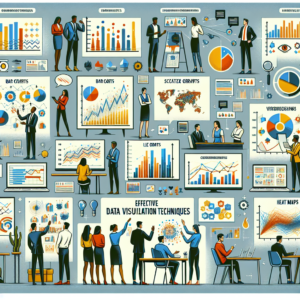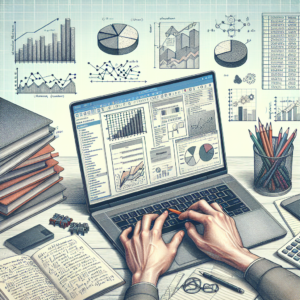Work has been the basis of human civilization since ancient times. Throughout history, the concept of work has evolved a lot, from hunting and gathering to agriculture and the industrial revolution. As the internet and the digital age took off, work took on a whole new dimension. In this article, we’ll look at the history of work and what E-learning platforms mean.
From Ancient Times to the Digital Age
With the advent of machinery and mass production, traditional forms of labor were transformed during the industrial revolution of the 18th and 19th centuries. This shift led to people moving from rural areas to cities, seeking jobs in factories and industries. It also led to the rise of the working class and labor movements that fought for workers’ rights.
Fast forward to the late 20th century, and the world witnessed another transformative shift in the nature of work with the rise of the internet. The digital age brought about a new era of remote work and online learning. As technology advanced, people began to explore new ways of acquiring knowledge and skills through online platforms.
The first online platform for online learning can be traced back to the 1960s when the University of Illinois developed PLATO (Programmed Logic for Automatic Teaching Operations). PLATO was a computer-based system that allowed students to access educational materials and interact with instructors remotely. It was a groundbreaking development that laid the foundation for future online learning platforms.
However, it was not until the 1990s that online learning gained significant traction. The emergence of the World Wide Web and the availability of personal computers made online
education is more accessible. The University of Phoenix, founded in 1976, became one of the pioneers in online learning, offering degree programs through the internet.
In the early 2000s, the concept of Massive Open Online Courses (MOOCs) gained popularity. Platforms like Coursera, Udemy, and edX emerged, offering a wide range of courses from prestigious universities and institutions. These platforms democratized education, making it accessible to a global audience.
E-learning today
Today, online learning has become an integral part of education systems worldwide. With the COVID-19 pandemic further accelerating the adoption of remote learning, online platforms have experienced exponential growth. Institutions and individuals alike are embracing the flexibility and convenience offered by online courses. From professional development to acquiring new skills or pursuing higher education, online learning has opened up a world of opportunities. Moreover, advancements in technology, such as virtual reality and artificial intelligence, are revolutionizing the online learning experience, providing immersive and personalized educational experiences. As we move forward, it is clear that online learning will continue to shape the future of work and education, bridging gaps and empowering individuals to learn and grow in a rapidly changing world.
Traditional learning Vs E-learning
Education is a fundamental pillar of society, and throughout history, traditional classroom learning has been the primary method of acquiring knowledge. However, with the advent of technology, online learning has emerged as a powerful alternative. In this article, we will explore the ability of learning online compared to traditional frontal learning in a class.
One of the key advantages of online learning is its flexibility. Unlike traditional classroom education, online learning allows individuals to access educational materials and participate in courses from anywhere, at any time. This flexibility is particularly beneficial for those with busy schedules, working professionals, or individuals with other commitments. Online learning provides the opportunity to learn at one’s own pace, enabling a personalized and tailored educational experience.
Moreover, online learning or as known as E-learning offers a wide range of courses and programs that may not be available in a traditional classroom setting. Students can choose from a vast array of subjects and disciplines, often offered by prestigious institutions from around the world. This accessibility to diverse educational opportunities allows individuals to explore their interests and passions in a way that may not be possible in a traditional classroom.
Advantages of E-learning
Online learning offers numerous advantages compared to traditional frontal learning in a class. Its flexibility, accessibility, diverse course offerings, global community, and interactive tools make it a powerful educational tool. However, it is essential to recognize that both methods have their strengths and limitations. Ultimately, the choice between online learning and traditional classroom education depends on individual preferences, learning styles, and specific educational goals.
Another advantage of online learning is the ability to engage with a global community of learners. Through online platforms, students can connect with peers from different countries and cultures, fostering a rich and diverse learning environment. This global perspective enhances the educational experience, providing unique insights and perspectives that may not be readily available in a traditional classroom.
Furthermore, online learning often incorporates interactive multimedia elements, such as videos, simulations, and virtual reality, which can enhance the learning process. These engaging and immersive tools can make complex concepts more accessible and facilitate a deeper understanding of the subject matter. Additionally, online learning platforms often provide instant feedback and assessment, allowing students to track their progress and identify areas for improvement.
However, it is important to acknowledge that traditional classroom learning also has its merits. Face-to-face interaction with instructors and peers can foster collaboration, discussion, and critical thinking skills. Classroom settings also provide immediate clarification of doubts and the opportunity for real-time engagement.
Summary
For navigating the present and shaping the future, it’s crucial to understand the history of work. Through it, we can learn from past successes and failures, adapt to changing circumstances, and keep work inclusive, equitable, and sustainable. In order to create a future of work that benefits individuals and communities, we have to understand the benefits of traditional learning and E-learning and the disadvantages of each one, and embrace innovation responsibly.
Before jumping into the water of E-learning, it is crucial to choose the right online course for you based on your own preferences.












